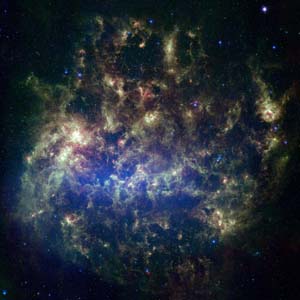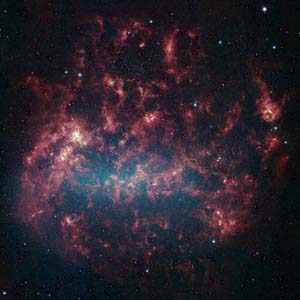
Caption: Astronomers have created two composite images of the Large Magellanic Cloud (LMC), the nearest galaxy to the Milky Way. This image shows the LMC at both lower and higher wavelengths of infrared light, a form of light that is not visible to the human eye. To produce the new visuals, an international group of astronomers — including researchers at the University of Wisconsin-Madison — worked with data collected by the the Spitzer Space Telescope of the National Aeronautics and Space Administration. During its six-year mission orbiting the sun, the Spitzer has been gathering infrared images of objects in the universe.
Photo by: NASA/JPL-Caltech/STScI/Produced by UW-Madison, University of Arizona, Baltimore Space Telescope Science Institute
Date: unknown
300 DPI JPEG
